One of the things I loved about the Harry Potter books was Harry’s invisibility cloak. I really liked the idea of being able to sit somewhere and have the world pass me me by without anyone or anything knowing that I was there. But while Harry’s cloak is fictional, the power of invisibility is all too real. Camouflage is a pattern which breaks up the shape and outline of something, making it harder to see. I use it myself quite often. Wearing camouflage clothing that makes me look more like a bush and less like a human being, means that wildlife will often come much closer to me than it would otherwise. On a few occasions, even people have walked right past me, unaware that I am there.
But in the no-rules contest-to-the-death that is the reality of life for every living thing except humans, invisibility can be literally a matter of life and death. Take the grayling butterfly, for example. Like all butterflies, it’s high on the snack list for a vast range of predators, everything from the familiar sparrow and bluetit to sophisticated aerial hunters like dragonflies and flycatchers (who contrary to their name, will happily take butterflies as well). The grayling likes places with grey rocks, or areas of heathland, those spaces of patchy gorse and low-growing heather, typically dotted with stunted birches or stands of pines. Heathland is typically littered with the bleached and weathered remnants of old bits of heather. It’s a background that is naturally confusing, full of random lines, making shapes hard to see. The grayling butterfly has a cryptic camouflage on its closed wings that makes it blend almost perfectly in with its background. There’s a grayling in the shot below, which was taken on Greenham Common. It’s actually easier to see in this shot than in most of the ones I took.
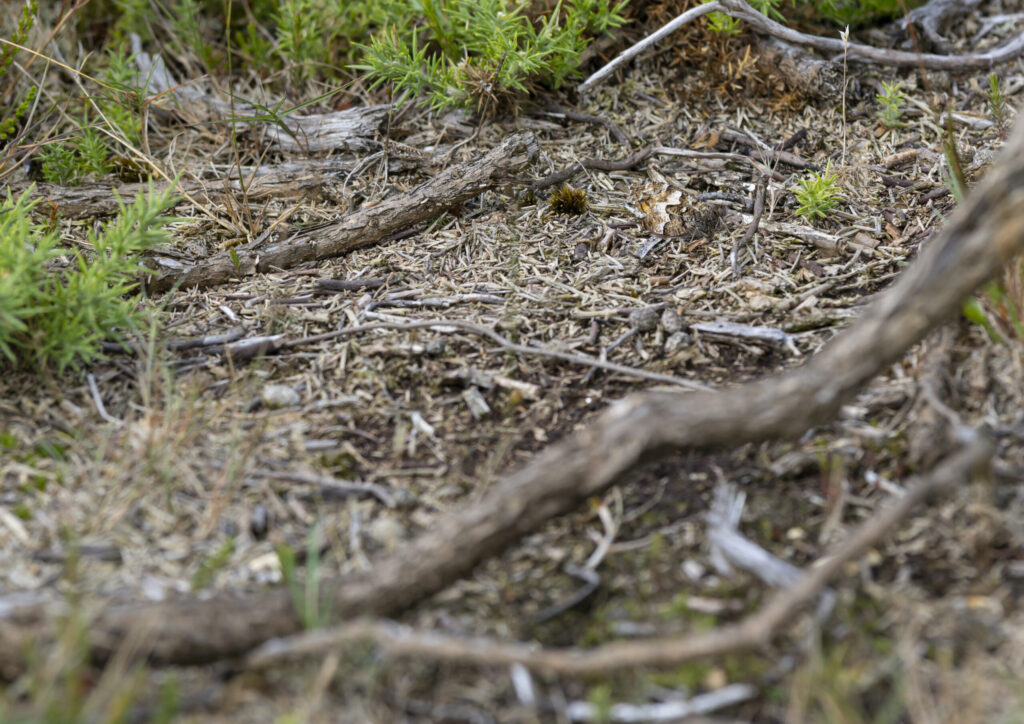
For prey species, evolution ruthlessly weeds out weak or ineffective camouflage. If you get seen, you get eaten, so those species which rely on camouflage as their only means of defence can be extremely hard to see. Which means it was a privilege recently to manage to see – in every sense – a bird that I have long wanted to see, one which takes this art of camouflage to a whole new level. It’s the Bird Who Is Not There. It’s the nightjar.
Like the grayling, the nightjar likes heathland, or clear felled areas of pine forest. It’s a ground-nester, so very much at risk from foxes and other predators. But the nightjar has developed camouflage so stunningly perfect that even its eyelids are painted – it will typically watch you with its eyes almost completely closed, in the way I used to watch horror films as a kid. From above, it looks exactly like a pile of old heather or dried leaves. From the side it’s a bit of stick, or a growth on a tree branch. I have had the experience with adders, whose camouflage is orders of magnitude more rudimentary, of looking at them, looking away, and then not being able to find them again. With the nightjar, I looked away, looked back, and would have bet my life that there was no bird there at all.
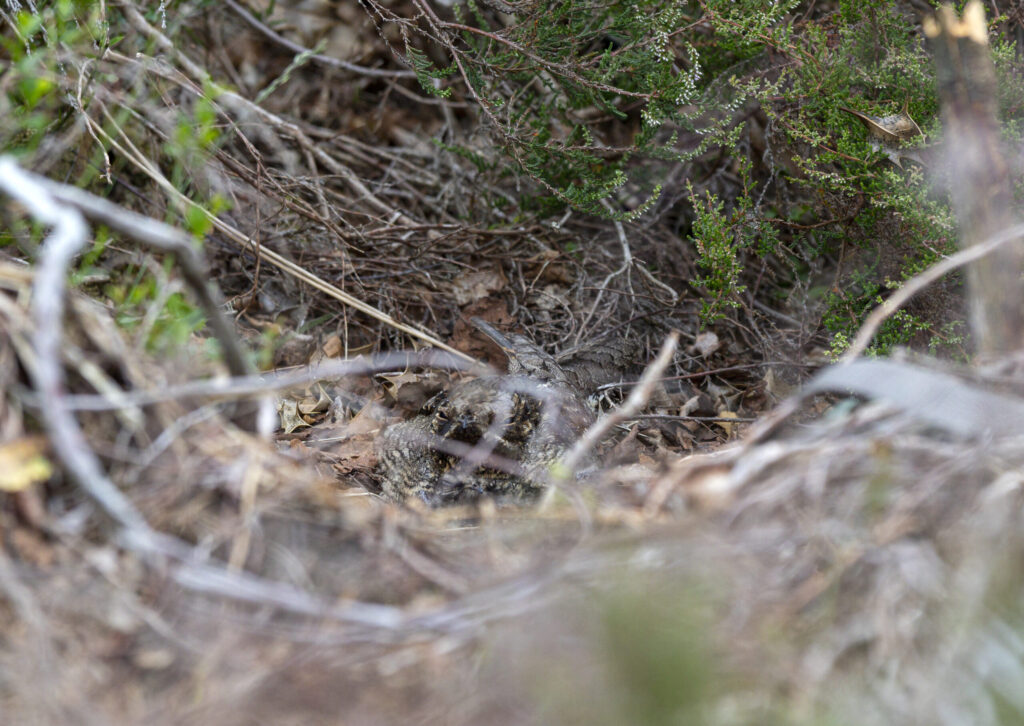
I could only see this particular bird because it had nested on some brown leaves which didn’t completely match its camouflage. I could sense that there was something there, some mismatch in the landscape, but it took me almost five minutes of looking before I finally understood that I was looking at a bird. Even then I got it the wrong way around, mistaking wing for head until the nightjar slightly opened one eye. I managed a quick photo, above, before retreating out of sight and checking to make sure that the bird had not been disturbed by my brief visit. Trust me, the photo makes the nightjar a whole lot easier to see than it is when you are simply walking through heathland. I could have walked over it without ever knowing it was there.
The nightjar is an unconventional bird in other ways as well. Its ‘song’ (usually only the male sings) is a fast, two-tone purring sound, like a cross between a contented cat and a Geiger counter in the centre of Chernobyl. It’s semi-nocturnal, hunting during late dusk and early dawn, right on the borders of night. It hunts for insects, which it catches either by flying low over vegetation like a bat, or by launching, flycatcher-like, from its perch to grab them from the air. A ruthlessly efficient hunter, it does not normally need to hunt for long before retreating back its roost or nest. It is also improbably long-winged, so much so that on the ground its wings are crossed behind its back like an impatient tail-coated waiter (you can make them out in the photo), while in the air it has the shape of a kestrel with a thinner body. Like swallows, nightjars drink and bathe on the wing, and like swallows they migrate back to sub-Sarahan Africa after their three-month UK breeding season ends in August (swallows stay longer, but are perhaps at less risk of being trodden on).
So there you have it. The nightjar, a bird better camouflaged than an army sniper, that flies at night like an owl, sings like a radiation detector, hunts like a bat, looks like a kestrel and breeds like a swallow. I suspect it comes to the UK not because of our plentiful supply of insects, but because of our renowned love of the weird and eccentric.
Much later that day, I stood on a woodland track as the last dregs of the light drained from the western sky. I heard a “kwi”call, like the opening notes of the call of a female Tawny Owl, which is the flight call of the Nightjar. Moments later a shape appeared, nothing more than a silhouette against the blue-grey darkness. It was a male nightjar. Unafraid of me, it approached and circled me, no more than fifteen feet above my head, calling all the time. And then, as suddenly as it had appeared, it vanished again, disappearing silently into the darkness. The true master of illusion.
PS – and is if to prove my point, a friend who read the blog said “You do realise that you can clearly see a nightjar chick in the photo, don’t you?” I magnified the image, which I must have looked at a hundred times by now – and they were right. There, just below the female’s head, you can clearly see a chick. And I hadn’t spotted it.
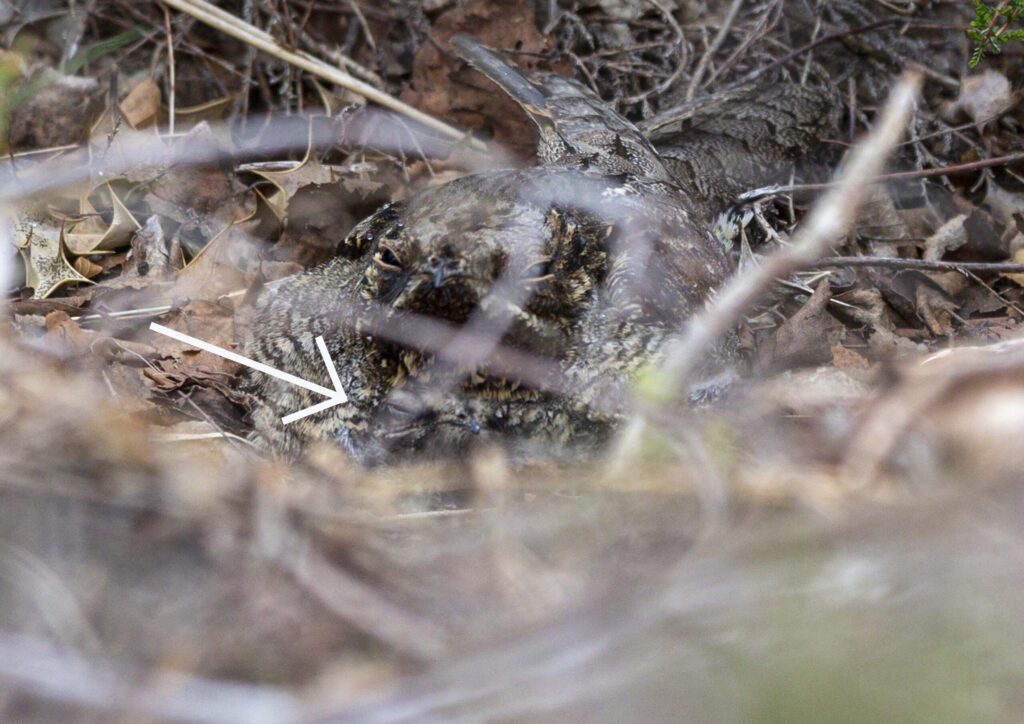
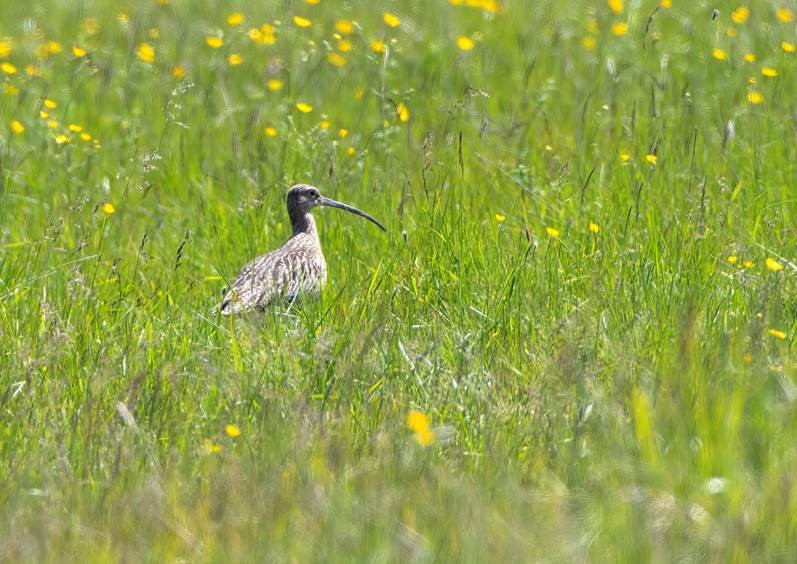
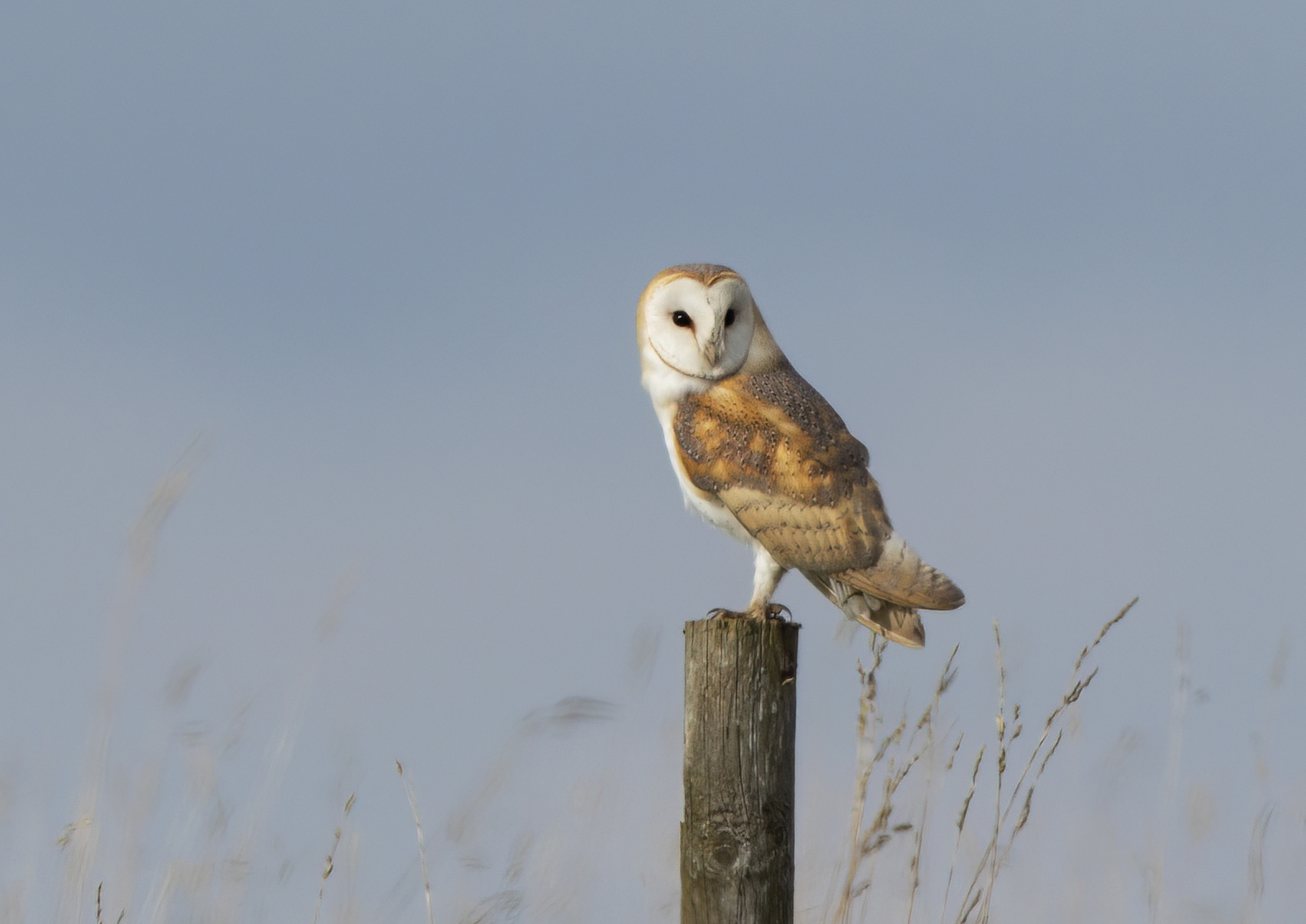
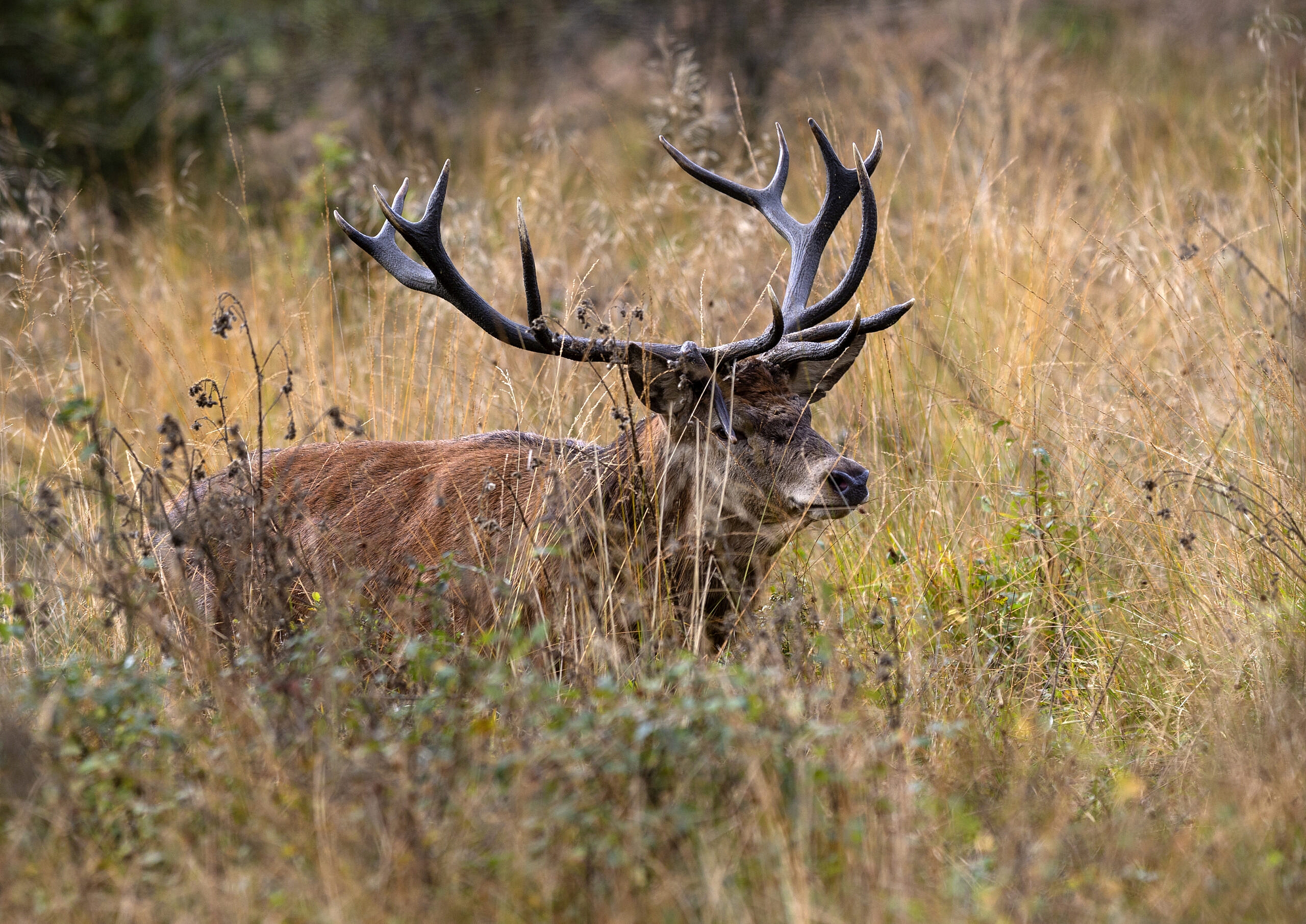

Social Profiles